Editor’s Note: We are returning to gear reviews and other ski-related stories this week, not to diminish current events but to hopefully provide reprieve from the news. Coronavirus news updates and stories will be sprinkled in as we write them, and we encourage social responsibility in ski-related activities during this time.
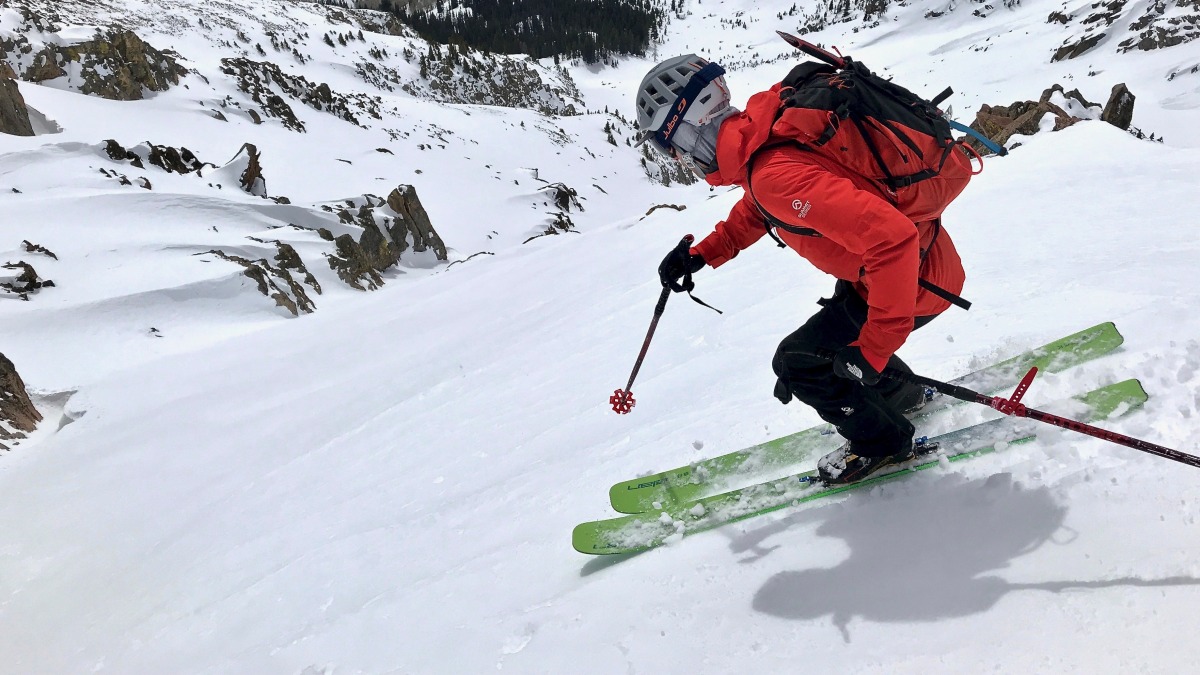
Black Diamond Helio 200 binding. Gets you to the distant steep skiing comfortably, and keeps you attached during it.
Continuing our look at 200ish gram binders here for the spring. I’ve been struggling to come up with a title for this class. Speed touring seems industry common– just doesn’t fully do it for me. Race plus? The lighter meat in the light and lightest sandwich? Whatever it is, they are light, compact, have the ability to crank the lateral release value, and have heel riser options.
Black Diamond knows what they make well themselves, and seeks to rebrand products they see better built elsewhere. A lesson learned from their less than spectacular boot program? Perhaps. The skis are now made by the Blizzard factory in Austria, though under BD design. BD realized the Italian machining perfectionists over at ATK were making top shelf ski touring bindings, and worked out a deal for their Helio line.
ATK is a spin off from the Indulti families’ GIMEC company, that makes metal working tools in the Emilian Motor Valley just south of the Italian Alps. For the non-motor heads such as myself, this area is home to Ferrari, Maserati, Pagani, Ducati, and more. So when members of the family wanted to make ski touring bindings, they were blessed with the familial experience of crafting the machines that make Italian supercars. Perfect lineage for sleek and sexy high performance ski bindings that give you the ability for veloce come un razzo, both uphill and down.
The timing of this article about an Italian-made binding is not lost on me. As Italy is dealing with the peak (hopefully) of a high infection and fatality rate with the novel Coronavirus, I found my brief research into ATK’s lineage to be all the more poignant. Paying homage to what our Italian friends have created, and will continue to, I’ll throw some Italian slang at you to copy over into the google translate machine during your current downtime.
I was particularly curious about the Helio 200 binding after spending two seasons skiing the 110g race binding in the Hagan branded Ultra version. I skied this definitively race binding hard on a pair of 106mm waisted skis for two seasons. I wore out a set of titanium u-springs and broke a heel riser flap, but upon inspection, find virtually no play in these clamps. That machinemanship in a binding with adjustable vertical and lateral release values up to 10, heel riser options, and an adjustment plate weighing 200 grams? I Malano miau!
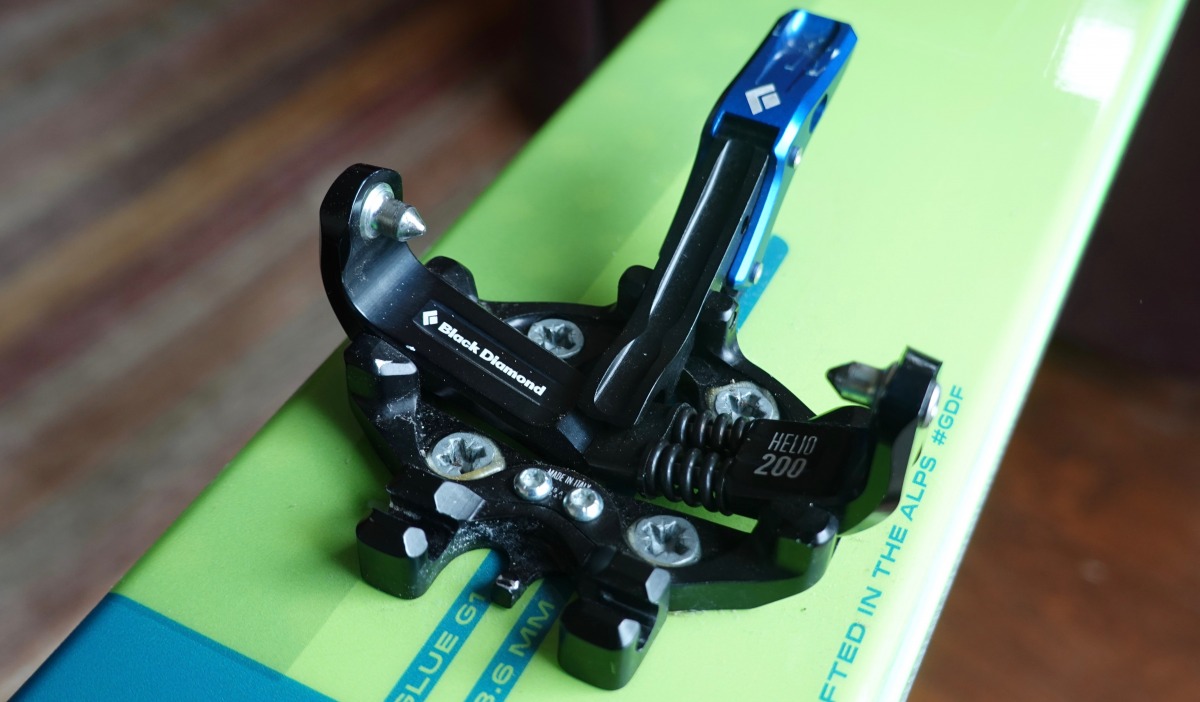
The left side of the toe unit is a single piece of aluminum all the way to the link. Lighter, more rigid, less to break.
The toe unit of the Helio 200 is the same as the 110. For this ‘Race Plus’ class, it is lighter and looks less robust. In particular, the asymmetrical spring design, dubbed ‘Monolink’, might give some pause. Though it may appear to be built with braccia rubate all’agricoltura, this design shaves a few grams, reduces available parts to break, and most importantly adds a shade more rigidity. The most common breakage point that I have seen in tech toes is the little composite bit that serves as a pivoting union between springs and lever. One less victim for inevitable abuse in the Helio 200’s design. The monolink’s function? Solid positive step in and rigid ski feel. I have equal time on other brand’s beefier toe pieces that have an acceptable amount of wiggle, none in my well used 110’s.
As for the Helio 200’s heel unit? Che figata. The 93 gram piece (without adjustment plate) is ultra compact and feathery given the independent adjustability of both lateral and vertical release- up to 10 RV. Two touring positions exist. Pins forward for a race style, single option heel position, or pins aft for both flat and high.
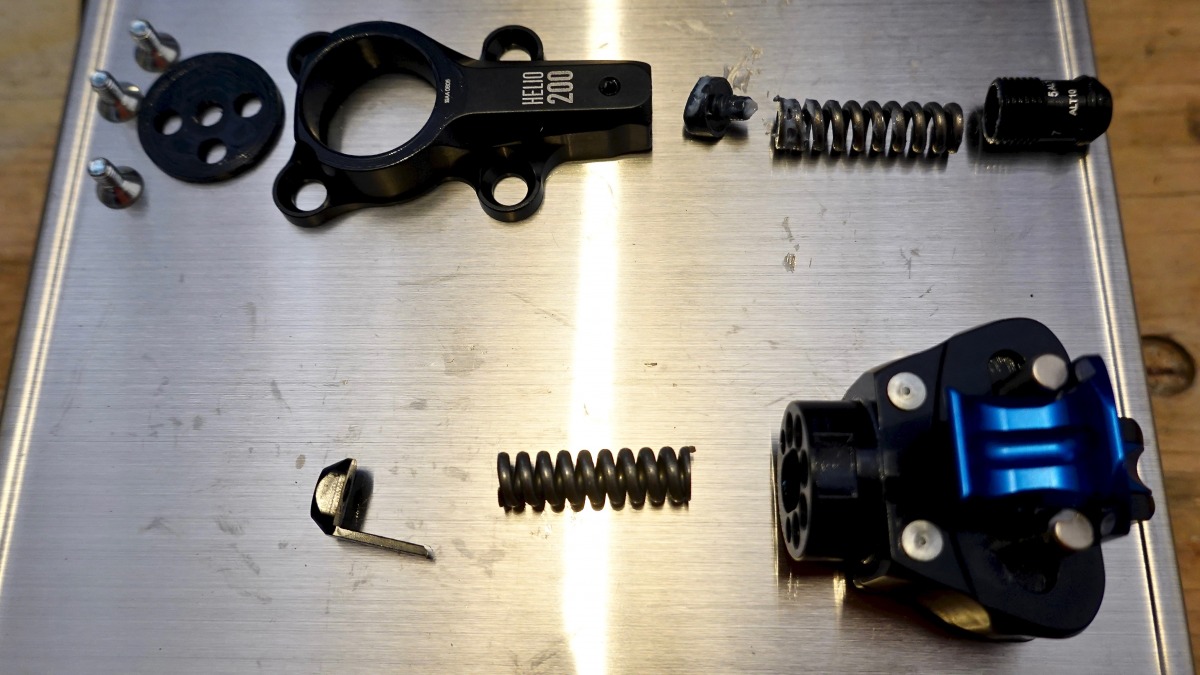
All metal, fine Italian craftsmanship in this heel piece.
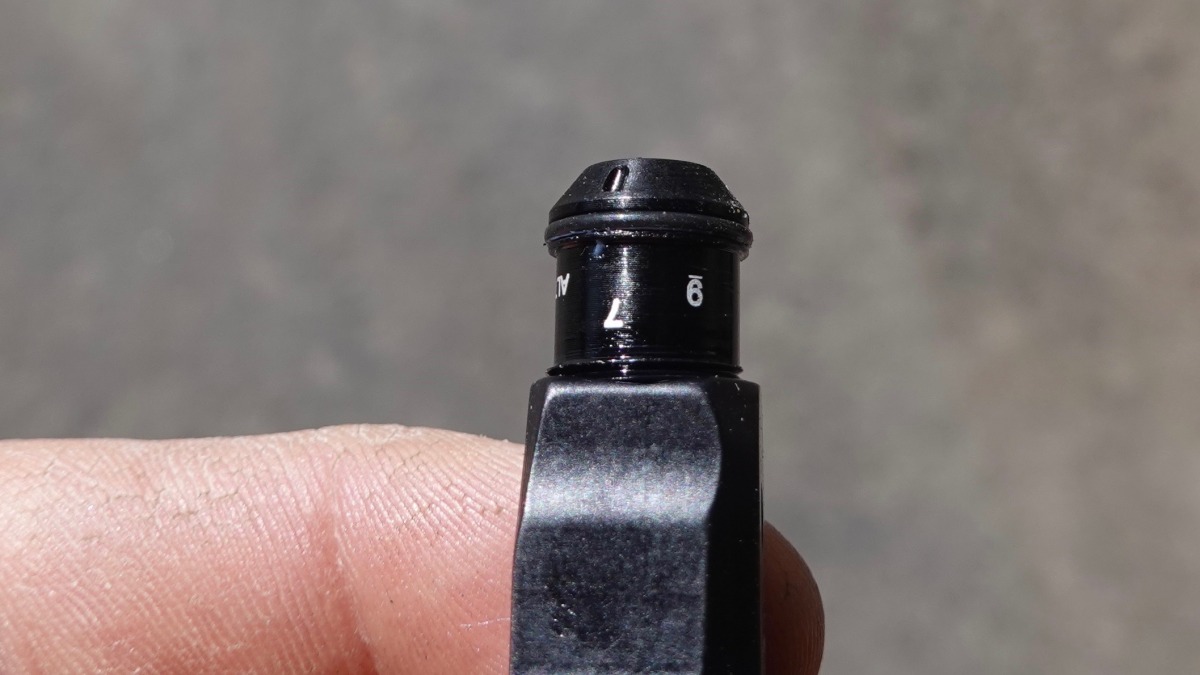
Well, almost all metal. The recessed rubber gasket on the lateral release adjustment screw is a fine attention to detail.
I mentioned last week that I am a big fan of flat modes despite my general use of rather mobile boots. In practice, the difference between turning the heel 90 degrees (as in the Plum Oazo 8 and many others) and 180 degrees in the Helio is surprisingly significant. The wrist can blindly and easily do a 90, a full reverso requires recruiting the elbow and upper arm. Furthermore, the sleek tiny unit offers less to grab a hold of and lever on. I don’t mean to be a guastafesta about it, but this extra 90 degrees required makes me less likely to switch. Maybe a good thing– just stay in race height, but I often found myself in the inutilmente alto high position instead of making the rotation again.
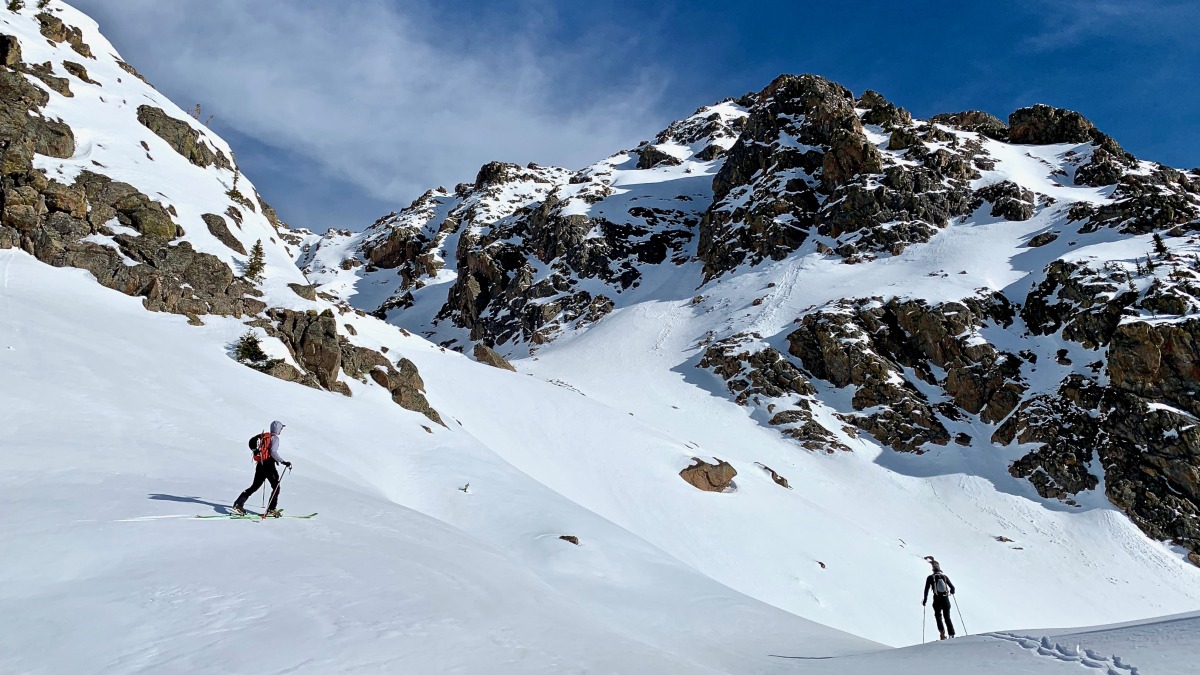
Topping out after a very steep frozen climb in ski crampons, the high riser directly to flat switch worked perfectly. The majority of the time it is too drastic of a change.
I haven’t spent a ton of days on the Helio 200 yet, but have done some quality testing. The first outing was a nearly 2,400 foot couloir that started in barely edge-able wind scoured snow and finished in up to 12 inches of powder. The approach was mostly in flat touring mode and then the skis went on my back for a long boot pack. Several days later, my team skied two steep faces (one in hot pow/wind board, the other not quite corn) that required a 10 mile snowmobile tow, 4 mile flat lake and creek skin, and very steep frozen ski-crampon skin just to access the booter portion. In a brief time I have been able to ascend and ski nearly all conditions possible and was generally pleased with the Helio 200.
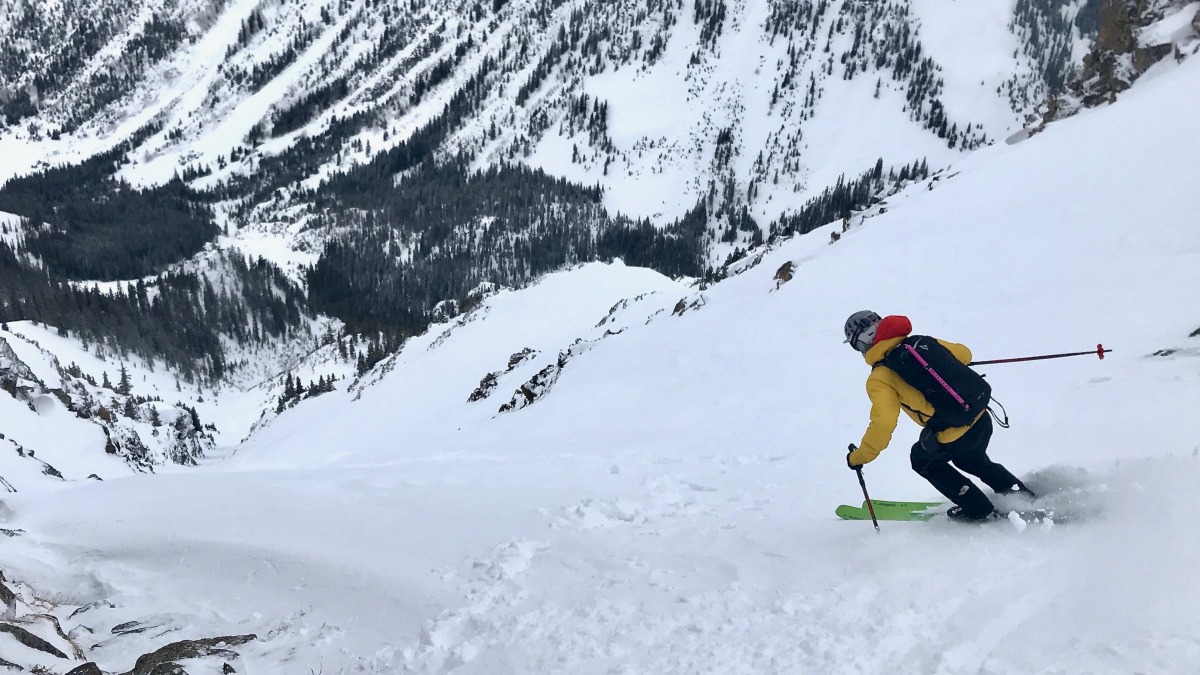
A near bulletproof entry slowly giving way to powder, Helio 200 indifferent to the conditions.
Basta, basta; I think you get the picture. It’s a lightweight and extremely well made binding, in line with the Plum Oazo we looked at last week, and forthcoming German option. Though I won’t be mettersi insieme with the Helio 200, I am happy to sport it on any mission, any size ski, and any type of terrain.
Need a new pair of binders and want to send a bit of economic love towards our Italian friends? Probably best to stick with Black Diamond’s branded imports due to warranty and repair issues if you are in North America. Otherwise, Europeans can order straight from the Bel Paese. You may need to be ricco sfondato though, as MSRP comes in at $1.75 per gram ($699 MSRP)
SPECS:
- WEIGHT: 200 grams
- MATERIALS: Alu Alloys, Stainless Steel, POM
- RELEASE: 5-10
- RISER: 3 Levels
- Comes with Optional Adjustment Plates and Crampon hook attachment
- Kevlar Core Leash Included
On March 22nd 2021, Gary Smith tragically died in an avalanche outside of Beaver Creek Resort in Colorado. Since 2018, Gary has been a frequent and insightful contributor to WildSnow. From Christmas Eve spent at the Wildsnow Field HQ cabin, to testing gear and sharing his love for steep skiing around the world, he was a pillar of the ski touring community and will be greatly missed.
